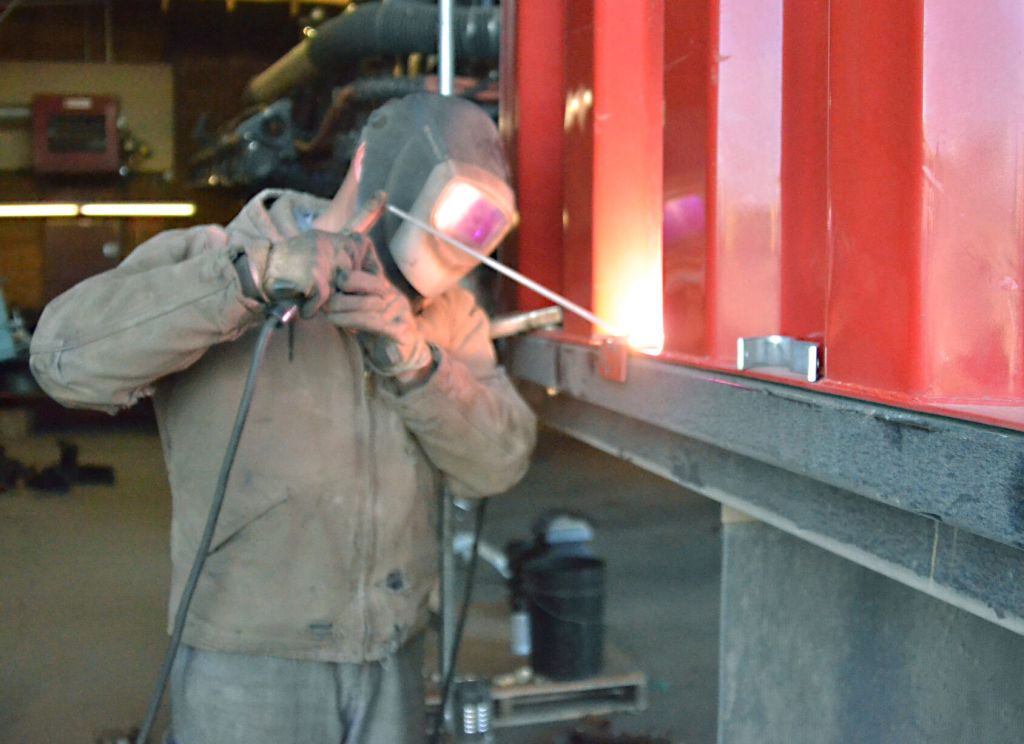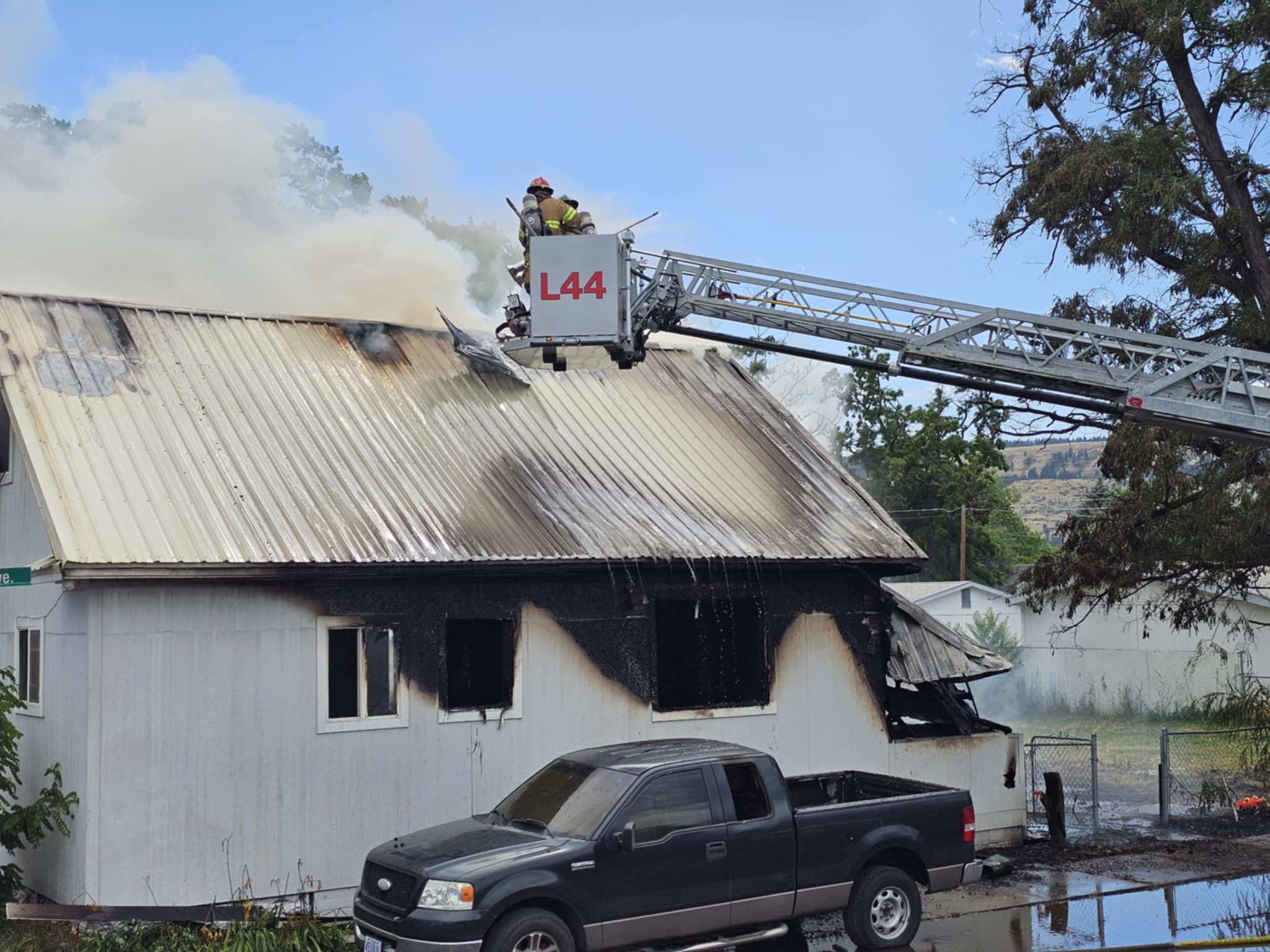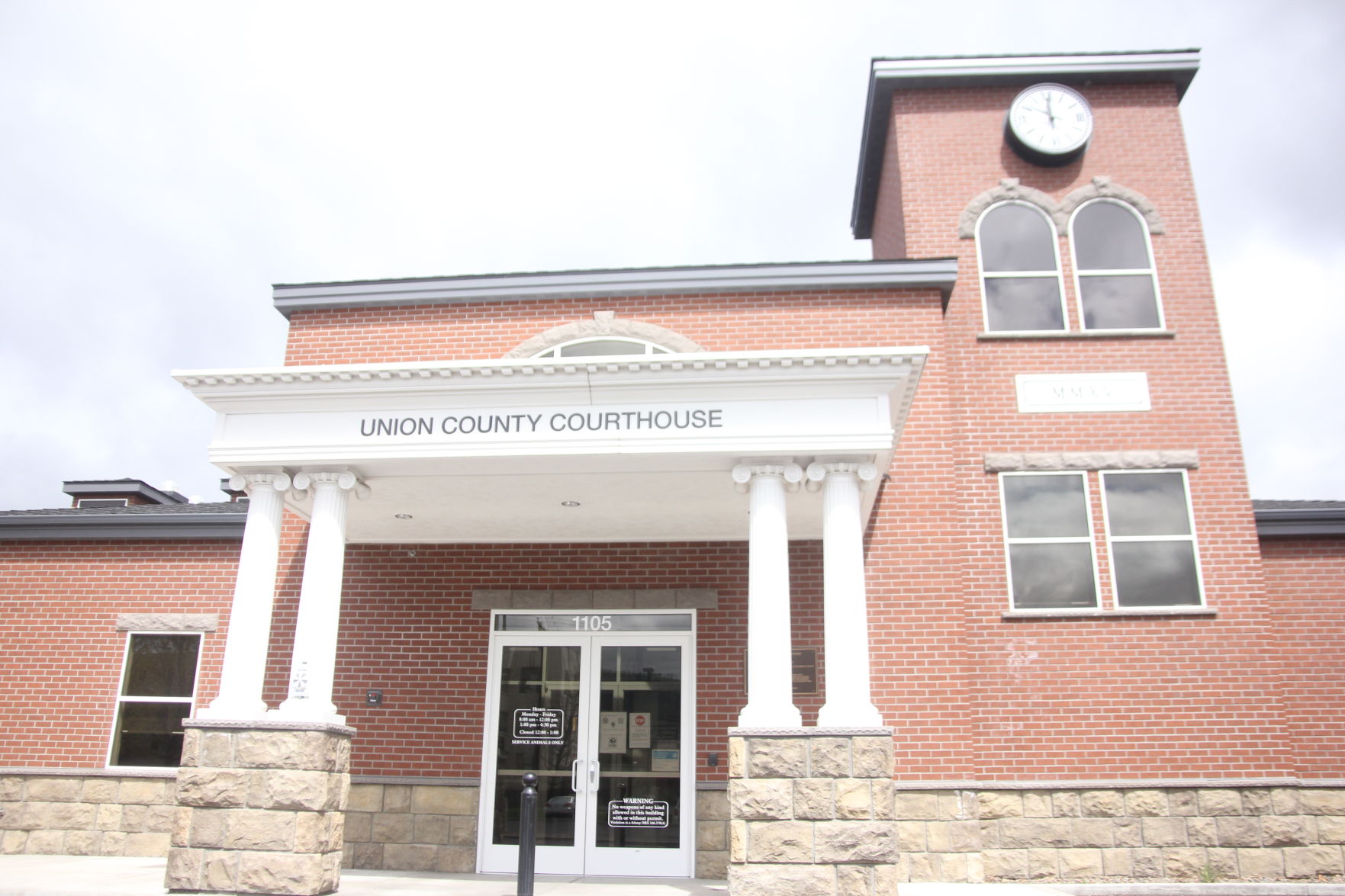A time for (no-)tilling: Wallowa County farmers treat soil gently
Published 6:00 am Tuesday, April 13, 2021

- Kevin Melville of Cornerstone Farms welds a part onto a grain truck Wednesday, March 31, 2021, at the farm shop near Enterprise in preparation for planting season.
WALLOWA COUNTY — With the arrival of spring, most Wallowa County farmers are gearing up to break ground for planting season.
But maybe “break ground” is the wrong term, since most here are advocates of “no-till” farming. No-till — or direct seeding — involves no or minimal cultivation, the application of herbicides to fight weeds, and the planting of cover crops that cattle can graze and will return nutrients to the soil.
“We got rid of our tillage equipment — the plows, the discs and the cultivators — over 40 years ago,” said Tim Melville, patriarch of the family-owned Cornerstone Farms near Enterprise. “We have fields that have not been tilled in over 40 years. We just rotate one crop after another year after year.”
He sees the practice as environmentally friendly.
“We stop soil erosion to next to nothing from both wind and water,” he said. “The other big advantage is you’re sequestering carbon because all your residue is being cycled back into the soil by all the biology that is created in those top few inches. They’re consuming all that residue — it just disappears. All the worms and bugs that are in that soil are consuming the residue. A plant is mostly carbon, (and) they breathe it in.”
Melville sees the relationship between man and plants as one where each helps the other.
“They (plants) are taking what we breathe out and turning it into something we can breathe,” he said. “It’s what you call a symbiotic relationship.”
The Melvilles — including Tim’s wife, Audry, and their sons Kevin and Kurt and their families — farm about 5,000 acres in the county raising a wide variety of crops. They hope to gets started planting this week, Kurt Melville said.
“We grow everything,” he said. “Wheat, barley, hay, flax, canola, timothy hay, peas, oats, mustards, quinoa. A lot of things.”
Other growers in the Wallowa Valley have followed the lead of the Melvilles, who began their no-till practices in the late 1970s.
“They were the ‘groundbreakers’ in no-till,” said Mark Butterfield, who farms about 2,200 acres of wheat, hay and cover crops near Joseph. “Now everybody’s doing it.”
While farmers appreciate the environmentally friendly aspect of no-till farming, their farms also are businesses that wouldn’t be able to continue unless they are profitable. The Melvilles recognize that no-till has numerous economic advantages.
“The economic side of this no-till is that it used to take us 27 minutes to plow and cultivate and fertilize and plant an acre of ground. In a day, we would plant 80 acres and you can figure what that would be,” Tim Melville said. “With no-till, we can do one pass with the sprayer to control the weeds and one pass with the drill and we’ll only spend 7 minutes in a field.”
The drill is the direct-seeding implement that does the actual planting.
“There’s also saving in fuel, because now you’re only burning 7 minutes’ worth of fuel instead of 27 minutes, and you’re only wearing out 7 minutes of iron (equipment) instead of 27 minutes of iron. So, there’s a huge economic advantage to no-till.”
The Melville sons have been brought up on the practice and took agriculture-related courses at the University of Idaho in Moscow.
“He started no-till before I even went to college,” Kevin said of his dad’s practices.
He noted that when he first went to the UI, professors there had little regard for no-till, thinking it wouldn’t allow crops to survive weeds.
“Now they’re pushing no-till, whether it’s the UI, Oregon State or Washington State,” he said. “Even though no-till had come out in mid-late ‘70s, there was a little push in the universities in the ‘80s to promote no-till, but by the early 1990s, they did not like direct seeding.”
Then, Kevin Melville said, there seemed to be a shift in thinking among agricultural educators.
“I think it took a generational shift. By the late-1990s and 2000s, they were pushing it again,” he said. “In the past 10 years, they’ve really started pushing it, and cover crops and soil health is a new thing. That’s when they realized no-till was an integral part of that soil health.”
Tim Melville even takes it to the point of the global warming issue.
“This is one thing I’d like our land-grant universities like Oregon State and the University of Idaho (to do): I want to know why they’re not speaking up in defense of global warming,” he said. “What I mean is, the warmer it is, the more crops you can grow, and the more carbon that’s in the air, the higher-yielding the plants are because they breathe that carbon. I want to know why nobody is speaking up on that.”
He said there have been studies where plants were fed extra carbon in greenhouses and productivity increased.
“Between you and me, this ‘global warming’ might be God’s way of saying the population of this Earth is getting so great we’ve got to feed these people and we’ve got to figure how to make ag production increase. Heat units and carbon are going to help that,” he said. “I’m just a farm boy out here, but I’ve been taught that heat units make things grow and carbon breathes it. … It increases production by increasing the amount of carbon that a plant breathes.”
Until now, producers have been preparing and testing their equipment for the planting season that is expected to take six to eight weeks.
“I think we’ll get started if weather holds in week or so,” Kurt Melville said.









